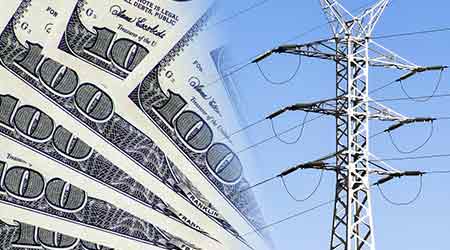Technology Provides Further Opportunities For Reducing Electricity Costs
From reducing peak demand to real-time energy pricing, opportunities for saving money on electricity are proliferating.
Many facility managers have heard of peak demand, which is the facility’s fastest use of electricity each month. “While not all utilities charge for peak demand, more are doing so,” points out Audin. “Peak demand’s pricing is rising faster than any other component of an electric bill.”
How a facility’s electric meters are arranged also may offer savings. “Every account has a fixed monthly charge, regardless of power consumption,” Audin says. “Think of it like a gym membership you pay whether or not you show up.” Under certain conditions, multiple utility-owned meters may be replaced by a single utility meter. Doing so may cut fixed charges and lower the coincident peak demand charge, while potentially shifting to a better utility rate and, if available, saving via competitive supply bidding on a single larger electric account. “No change in operations or power-consuming equipment is involved,” Audin says.
Many tariffs also charge based on the voltage of power received at a facility. By installing its own distribution transformer or substation for large sites, a lower distribution charge may be available. Audin concedes the payback period for this option may be long, but notes distribution transformers and substations last for decades. “In some cases, merely being able to show that option is feasible may elicit a rate cut for not pursuing it,” he notes. It is a way for the utility to preserve revenue while meeting their customer halfway.
Where electricity usage can be shifted to off-peak utility periods, time-of-use (TOU) and real-time pricing (RTP) rates may offer annual savings as compared to standard rates. Facility managers interested in benefitting from these rates, however, need to apply load profiles and use digital data from either utility or their own meters to produce usage and demand data in 15-minute increments, notes Audin.
Facilities producing renewable power may be able to sell renewable energy certificates (RECs). RECs represent environmental attributes such as zero carbon production of the renewable energy produced. According to Audin, “a robust wholesale market exists for RECs, which are traded every day like other commodities.”
In addition, most states have renewable portfolio standards requiring utilities to generate a portion of their power from renewable sources or to buy RECs from other power suppliers. However, if a facility sells the REC for the renewable energy it produces, “the utility then owns the environmental attributes for that power,” Audin says. That means facility managers could not count it against their own facilities’ carbon footprints.
Future power pricing reductions
Digital metering, on-site power storage, and real-time pricing software are additional ways to reduce a facility’s power pricing.
“Digital meters are proliferating across the nation, though at an uneven rate,” notes Audin. “Such meters open the door to a variety of alternate rates and procurement options.” For facility managers faced with mechanical utility meters, Audin suggests asking the account rep when digital replacement units are planned. “If they are not planned presently, contact the PUC and push for them,” Audin says.
As on-site power storage drops in price, combining it with on-site renewables and demand management systems may allow facility managers to shift load and consumption without reducing electricity use, according to Audin.
“Software is already in use in some facilities that integrates real-time pricing with real-time usage and power storage to optimize power procurement and on-site power production,” observes Audin. “Once again, knowledge of power use in sub-hourly increments may be crucial to making the most of such options.”
Rita Tatum, a contributing editor for Building Operating Management, has more than 30 years of experience covering facility management.
Email comments and questions to edward.sullivan@tradepress.com.
Related Topics:














